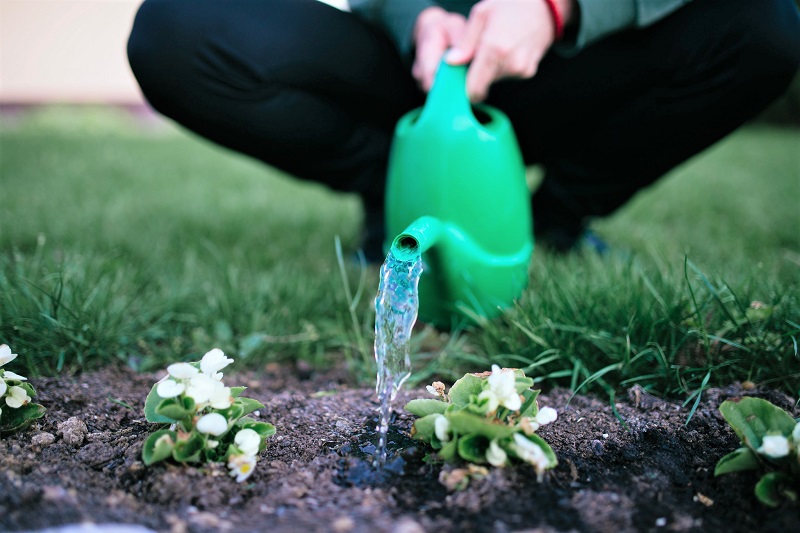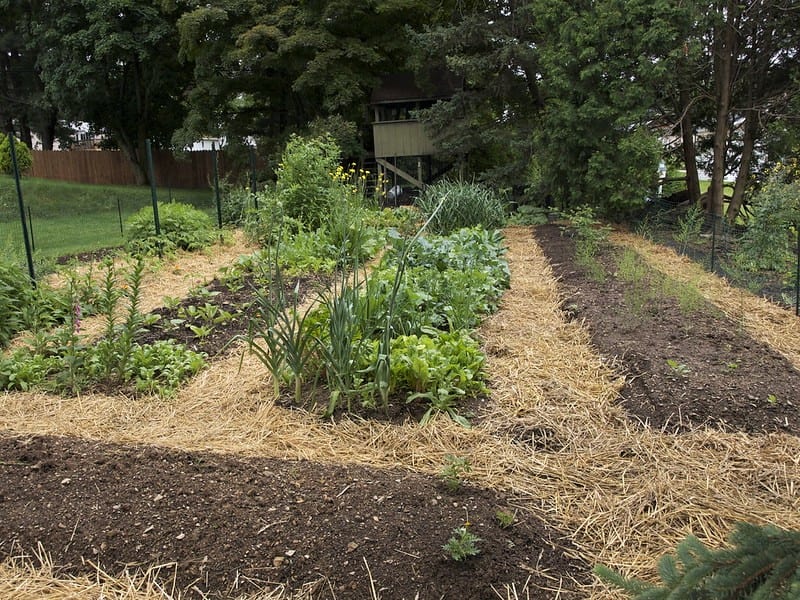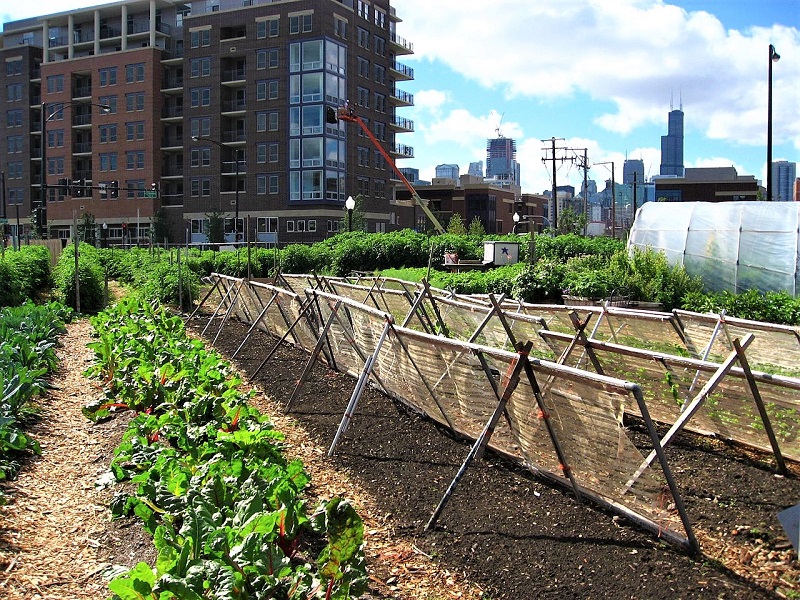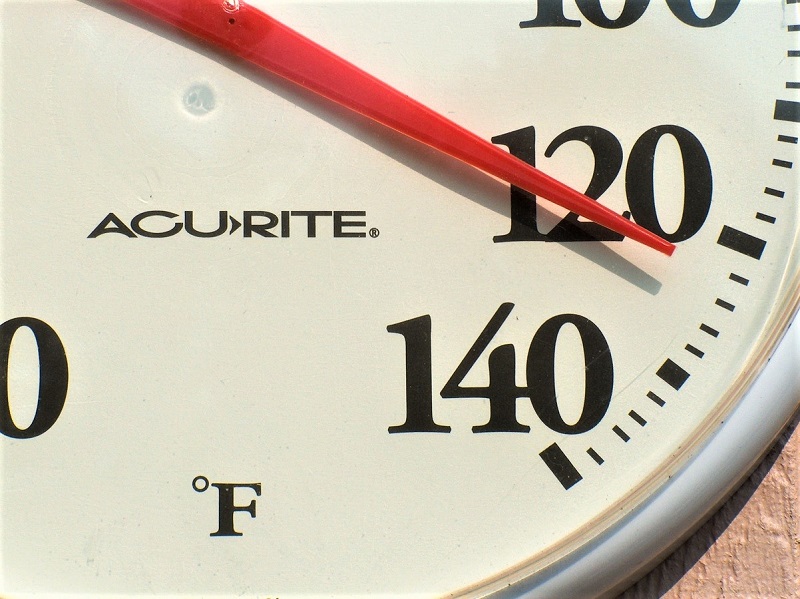Last Updated on November 27, 2023 by teamobn
If you’ve had a good gardening year so far, then by now, all the digging, hoeing, weeding, and feeding will have begun paying off. Your family is enjoying the salad greens and potatoes. Your basil is thriving, and so are your parsley and chervil.
Go ahead. Take a little break and look around. There is life everywhere and bright summer colors abound.
Some early beetroots and carrots should be coming along fine in their little plot. Tomatoes, too. Be sure you check on them every day.
Over by the verge, past the chest-high corn, your climbing beans will have already conquered the fence. Meanwhile, your nasturtiums and foxgloves will have bloomed into an astonishing show of oranges, pink, and white under the bright sunlight.

Protecting Your Garden Against Heat Stress
Contents
In this picture-perfect weather, it’s easy to forget that summer brings its own set of challenges and health risks. For gardeners, heat stress and sunburn are the most obvious and immediate concerns.
That being said, sunscreens should by now be part of your daily routine. Remember to stay hydrated throughout the day, too. That just might save you a costly visit to the doctor.
Remember, also, that you are not the only one at risk. Excessive heat can cause equally irreparable damage to your garden.
In plants, the symptoms of heat stress include wilting, blossom and leaf loss, and dull yellow patches on leaves and produce. If left untended, stricken plants will die.
Fortunately, you can protect your patch of green against heat stress with a few smart and simple preventive measures.
1. Keep soil evenly moist.
Protect your plants against heat stress by keeping the soil evenly moist. Deeper and less frequent watering is more effective for most plants than frequent, shallow watering.
Deep watering allows plant roots to grow stronger and healthier, and you will not need to water as often.
To check whether it’s time to water, push your finger down into the soil. If it is still moist a knuckle or two deep, then your plot doesn’t need water yet.
If it’s dry, then it’s time to give the soil a long, deep soak to ensure that the water reaches the root zone.
In general, soil moisture should reach up to 4 inches in depth to provide the best protection for gardens during the height of summer.

(Photo: Nenad Stojovic/Flickr)
2. Mulch your garden.
Now is a good time to lay a blanket of organic material over your garden. You can use straw, leaves, shredded paper or cardboard, or bark as a mulch. The protective cover will moderate soil temperature and prevent runoff and evaporation.
Mulch will also help the soil in your garden retain moisture and nutrients even under intense sunlight.
You can purchase bagged mulch at your nearest garden centre. If you are up to the task, you can make some right at home.

(Photo: Kenny Point/Flickr)
3. Continue weeding.
Let your flowers and vegetables take advantage of all they can draw from the soil by reducing competition from unwanted vegetation. Weeding will help your plants cope.
High summer temperatures quickly dry out the soil, leaving it hard and stale. Removing weeds reduces competition for limited moisture and nutrients.
Sure, weeding can be tedious and tiresome, but it’s absolutely necessary – especially around this time of the year.
4. Shade your plants against direct sunlight.
Shade your soil and plants against direct sunlight. If you are the type who enjoys the DIY approach, you can create a flexible structure to hold your shade in place.
Simply hang a cloth or some mesh cut from an old window screen from a line stretched between two posts.
Or you can visit your gardening centre to choose from a wide variety of commercial gardening shades.
Either way, your protective shade should be 3 to 4 feet away from the plants to allow optimum airflow.

(Photo: Linda N/Wikimedia Commons)
5. Keep tabs on the weather.
If you are interested in gardening, then you are probably interested, at least somewhat, in the weather. Understanding the basics of meteorology and keeping track of the weather can make your gardening more fun.
Check the weather report for your area at least once a week. Some gardeners even monitor several forecasts daily, either by television, radio, or the Internet.
Knowing when there may be a heatwave just might be what saves all the fruits and blossoms of your hard work this year.

Maintaining a Healthy Summer Garden
We’ve all experienced it, especially these days. Blistering temperatures above typical summer averages drive us indoors – into the comfort of our homes. But what about the plants in our gardens?
Unless they are in a pot and can be brought indoors, they are stuck outside in the blazing heat.
Follow the steps outlined above to protect your plants from heat stress this summer.
Keeping well informed and taking necessary precautions are key to maintaining a healthy, productive summer garden.
The Wrap Up
This guide is designed to help protect plants from the detrimental effects of heat stress. The emphasis is on simplicity, offering easy-to-follow strategies to maintain a cool and supportive environment for the garden. This outlines five specific approaches, providing practical advice on techniques such as shading, watering, and other measures to counteract the challenges posed by high temperatures.
Overall, the guide aims to empower gardeners with straightforward and effective methods to ensure the health and resilience of their gardens in the face of heat stress. From keeping the soil moist to practical shading techniques, the guide provides a spectrum of actionable strategies. Additionally, it extends its reach to broader considerations such as enhancing soil health and creating microenvironments within the garden.
With a diverse set of strategies, you are ready to promote resilience and vitality in your gardens, even in the face of challenges like heat stress.








